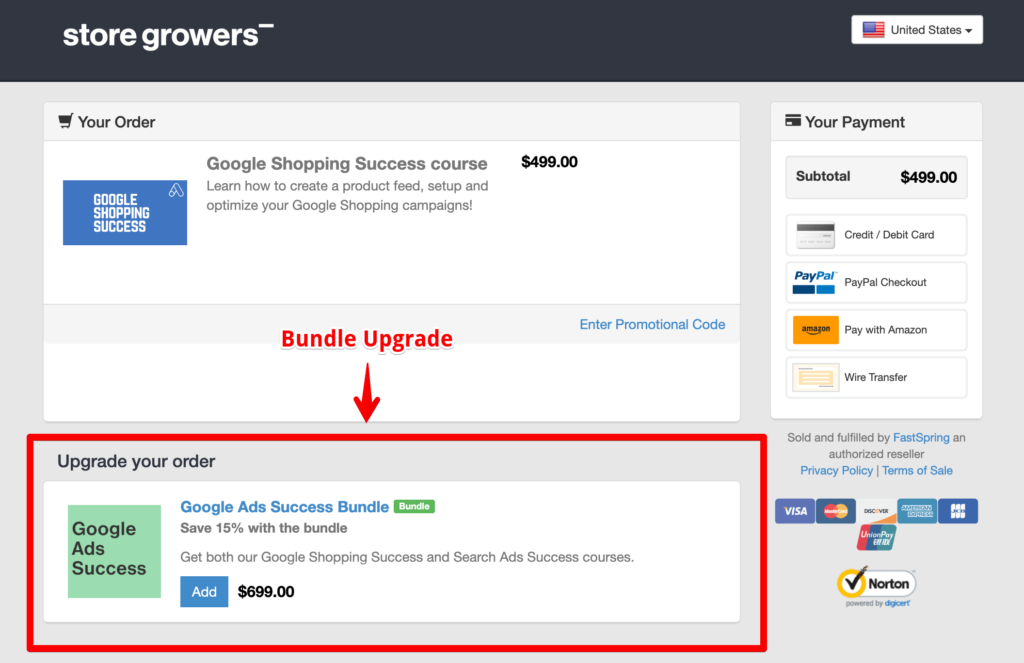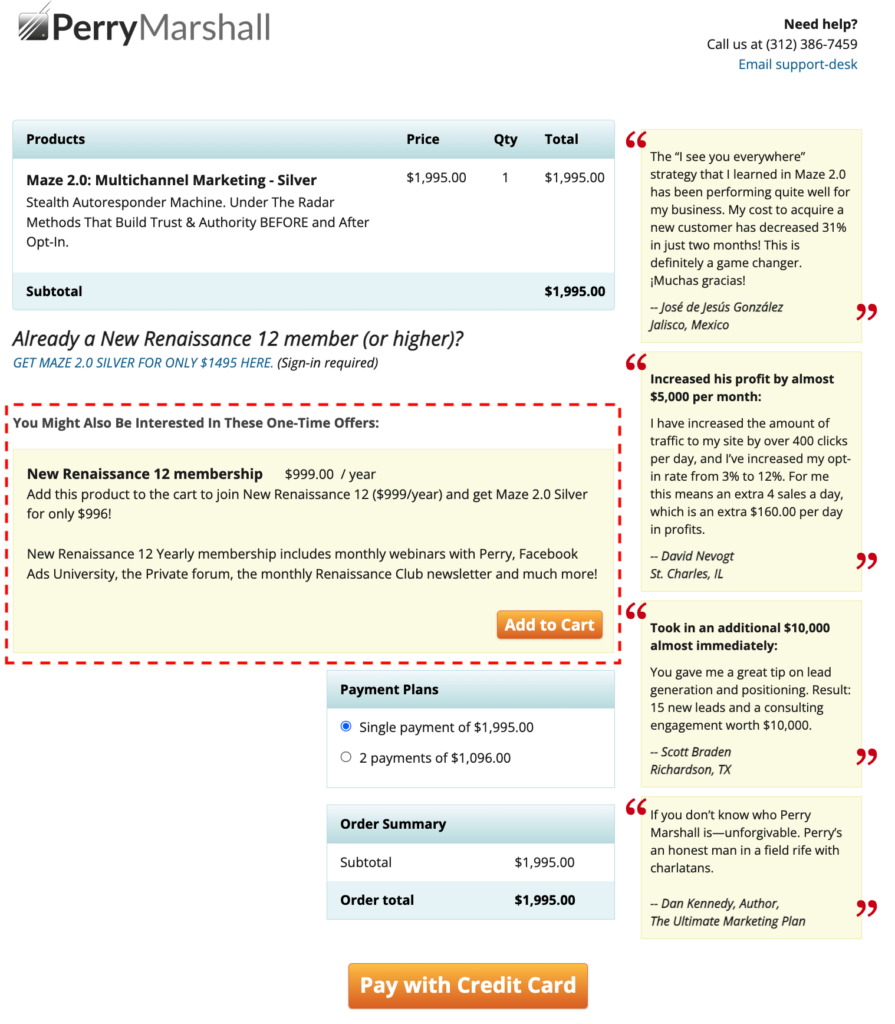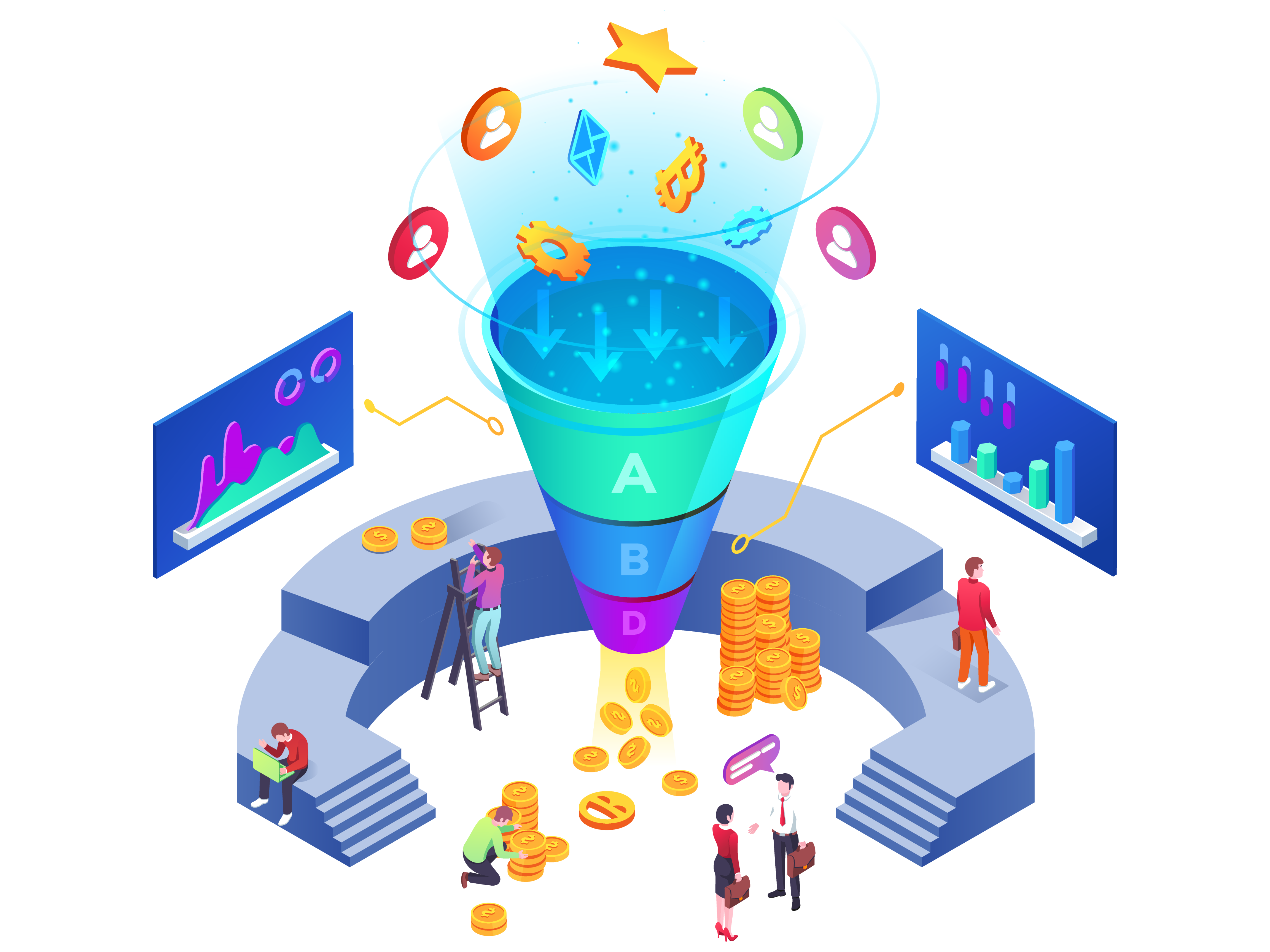Order bumps are a smart strategy for just about any direct-to-consumer business looking to increase revenue.
They are great because they are incredibly effective at increasing a store’s average order value.
Customers like them.
And more than that, order bumps are fairly easy to add to your sales funnel.
To help you get a better feel for how order bumps work and how you can use them to increase your sales, this guide will show you 10 different types of order bumps.
We’ll dissect what makes a great order bump.
And we’ll show just home much you can expect your order bumps to increase your sales.
But before we get to the examples, to make sure we are on the same page, let’s talk about what an order bump is.
What’s an Order Bump?
An order bump is a pre-checkout offer for a complementary product or service.
Essentially, order bumps are simple add-ons that entice the customer to increase their order size right before they checkout.
How are oder bumps different from other types of cross-sells, upsells, and downsells?
An order bump is a type of cross-sell.
The key distinction that separates an order bump from other types of cross-sells is that it’s offered right before checkout.
Upsells and downsells are typically offered post-purchase.
The Power of Order Bumps
So, why are order bumps such a big deal?
It’s simple. They boost profits and enhance customer satisfaction.
By suggesting add-ons that complement the original product or service, businesses can increase their overall order value while also providing a better customer experience.
For proof of how effective order bumps are, look no further than the largest online retailer in existence. Amazon reported that 35% of its revenue is generated through upsells, cross-sells, and order bumps.
Order Bumps by the Numbers
For the online course creators we coach, anywhere from 20% to 60% of their customers act on their order bumps.

And the average increase in cart value their order bump adds is close to 15%.

So order bumps are not trivial add-ons.
They can add a ton of revenue to your online store and boost your bottom line.
The Two Keys to Effective Order Bump Strategy
You can learn a ton about creating high-performing order bumps by examining the examples in this post.
As you review the examples and think about how you can emulate them in your own business, keep this in mind…
The most effective order bumps do two things really well.
One, they keep the offer simple.
You want to design your order bump so it’s a “yes” or “no” proposition. No – choosing between sizes, colors, or styles. Simply “Yes,” I want to add that to my primary order. Or, “No thank you.”
Two, the best order bumps offer a complimentary item. The better your order bump pairs with the primary purchase, the better it will convert.
10 Clever Order Bump Examples
Now that you know what order bumps are and how they work, let’s get to the examples so you can see which type of order bump will work best for your ecommerce store.
The Most Famous Order Bump
You’ve probably acted on this offer at some point without even realizing it’s an order bump.
The most famous order bump of all time is a simple question, “You want fries with that?”
As the story goes, this order bump originated when McDonald’s discovered a huge number of their customer were buying a burger and nothing else.
So they devised a test to see if they could increase their customer’s oder value.
Their sales clerk would take their customers’ orders and then ask, “Do you want fires with that?”
That simple questions resulted in a 50% conversion rate.
Half the customers said yes to adding fries to their order.
When McDonald’s HQ discovered how successful this offer was, they put the order bump into practice company-wide.
Since then, it’s raked in billions in sales.
Why does this order bump work so amazingly well?
It adheres to the two rules of high-converting order bumps. First, the offer is a simple “yes” or “no” proposition. Second, it’s an add-on that pairs with just about anything you can order from the McDonald’s menu… unless maybe you’re getting a salad. But I mean, c’mon, who goes to McDonald’s for a salad?
The Standard Order Bump
Here’s what the standard online order bump looks like:
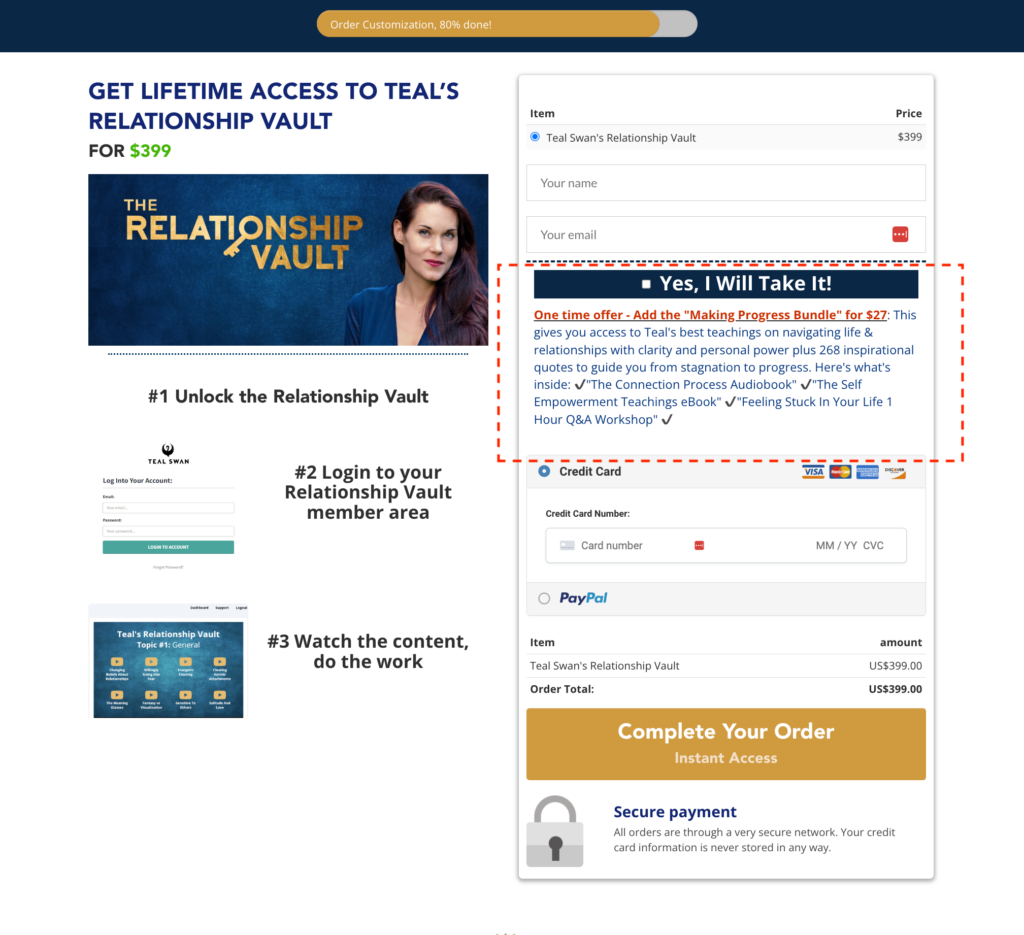
The thing to take away from this order bump example is how to apply the fundamentals.
The order bump goes on the checkout page, right smack dab in the middle of the checkout form.
It asks the customer to make one decision — click the tick box that says “Yes, I will take it.”
It has one paragraph of sales copy that concisely states what the offer is.
The Double Bump
The Double Bump involves adding two order bumps to your checkout page.
Is this aggressive? Not if you’re offering add-ons your customer wants.
In this case, if the customer takes both order bumps, it increases the order value by more than 600%.
If you decide to try the Double Bump, the two metrics to focus on are checkout page conversion rate and total revenue.
Here’s why…
If your double order bump makes the customer scroll further to complete their order, you could lower your conversion rate.
Also, having two order bumps instead of one is also likely to lower your overall order bump take rate.
But on the other hand, if your double order bump produces more total revenue because the sales that come in are higher value, then the trade-off might be worth it to you.
It depends on whether you want more orders or more revenue.
The Free with Shipping Bump
This order bump has worked since the early days of direct response mail order marketing.
But it has been made more famous in the internet era by the sales funnel king himself, Russel Brunson.
The mechanics of this double order bump are a little different from the one we just looked at
The two order bumps are presented with a couple of lines of sales copy and an “add” button.
If you want to read more about either offer, you can click and see what’s included in this offer.

The real strategy behind this bump is the front-end offer.
The customer is enticed by the opportunity to get a product that is “free” except for the shipping price.
While they are checking out, they see a complimentary offer that is too good to pass up — the order bump.
The In-the-Cart Bump
Although the number one rule of order bumps is to keep the offer to a simple “yes or no” decision, that’s not always possible.
Sometimes you have to ask the customer to pick a size or color.
If that’s the case for your store, you can try using the In-the-Cart Bump.
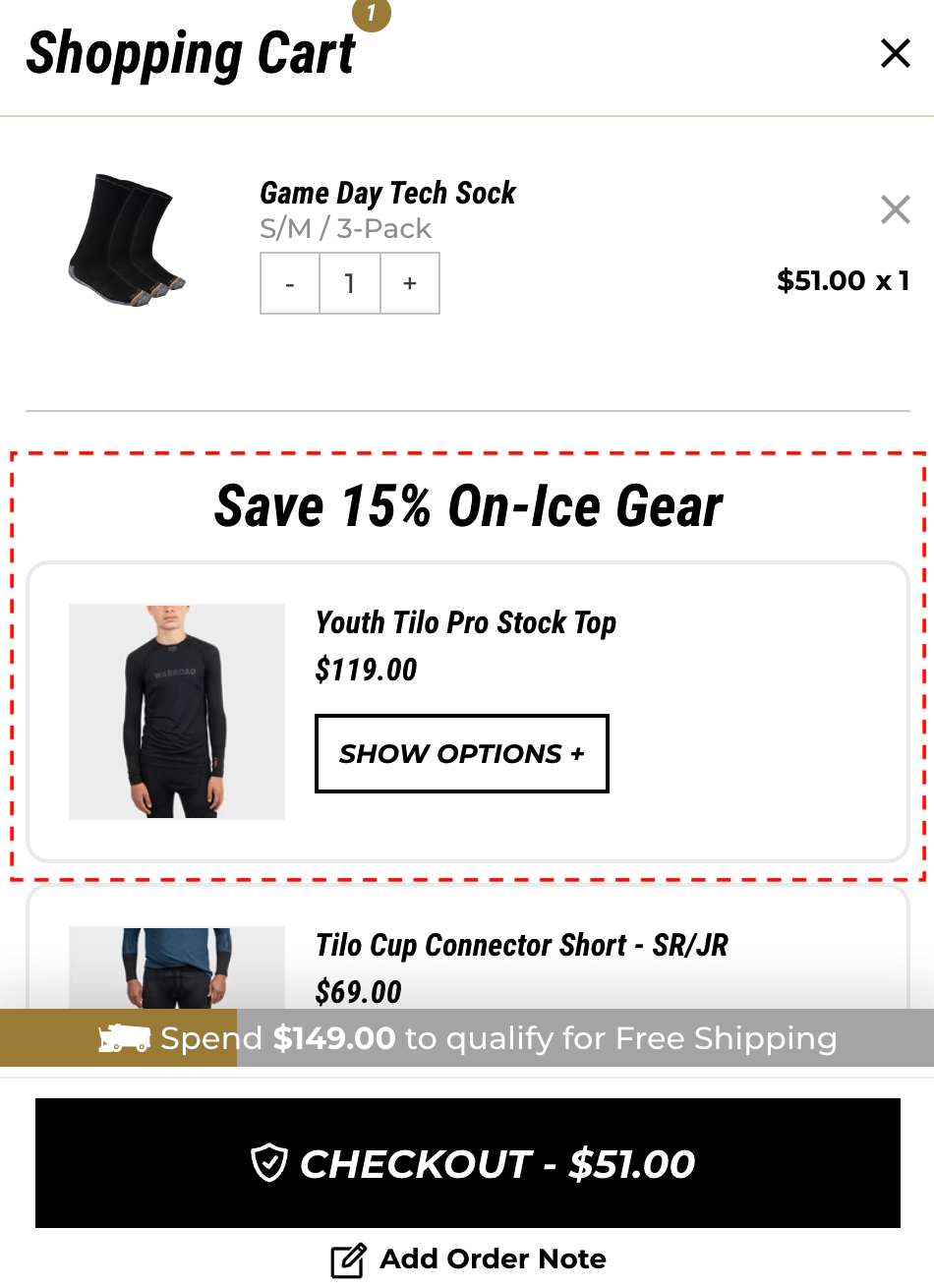
The In-the-Cart Bump presents the customer with the best possible product pairing right before they checkout.
The Bundle Bump
The Bundle Bump is kind of like an upsell because it offers an upgrade as opposed to an add-on.
But it’s still a pre-checkout offer. So for the sake of this post, I’m classifying it as an order bump.
Here’s how the Bundle Bump works…
At checkout, you offer the customer a product that bundles their primary purchase into a better, bigger package and gives them more bang for their buck.
This upgrade also increases the average order value.
The Mirror Image Bump
This Mirror Image Bump may be the most straightforward of all our order bump examples.
At checkout, you offer the customer an add-on that goes hand in glove with their purchase.
This add-on, the order bump, is for the same kind and category of product offered at the same price as the primary purchase.
It’s like a twofer.
The More of the Same Bump
This type of order bump is perfect for re-fillable products.
Essentially, this order bump is an offer to get a better deal by increasing the volume of the order.
What makes it work so well is that the merchant is offering it at checkout.

At this point, the customer has pretty much already decided to purchase.
So increasing the volume, i.e., the value of the order, becomes an impulse purchase.
The BIG Discount Bump
This order bump relies on deep discounting to convert customers.
The strategy here is to present the customer with a limited-time offer that’s so good they can’t help but add it to their order.
All the other order bump mechanics apply to this offer. But the clincher is the deeply discounted price your order bump offers.
The Membership Bump
Believe it or not… yes, you can order bump a membership program.
The conversion rate of a membership order bump will vary with the size of the commitment you’re asking of your customer.
For instance if your order bump offers a newsletter or magazine subscription at a relatively low cost, your customer might love that offer.
But if you’re asking for a pricey commitment, then your order bump becomes less of an impulse purchase, and the conversion rate tends to decline.
That said, it can still be worth it to offer your membership as an order bump because that offer won’t pay off just one time. Instead, your order bump will pay off over and over again as long as your new customer remains enrolled in your membership.
If you do use a membership offer as your order bump, be sure to make it clear to your customers that they are not signing up for a one-time payment. You need to let them know in your offer that taking your order bump is a commitment to a recurring payment.
What’s the bottom line when it comes to order bumps?
We covered the set-up, strategy, and technique behind order bumps.
And we also looked at 10 clever order bump examples to give you some ideas about how to create and use order bumps.
When you’re ready to create your own order bump, here are the key takeaways to keep in mind.
Add it to your checkout: Your order bump is an in-cart or check-out page offer. (They work best on your checkout form.)
Make it complementary: When designing your oder bump offer, try to make it complementary to the primary purchase
Keep it simple: Order bumps are an impulse buy. So don’t overwhelm your customers at the point of sale. Make taking your order bump as easy as clicking a “Yes, Please” tick box.
Mind your metrics: Order Bumps are great at increasing average order value and total revenue. But to make sure yours is working the way you want it to, mind your metrics. Keep track of your checkout conversion rate, order bump take rate, and total revenue to see how well you order bump performs.




